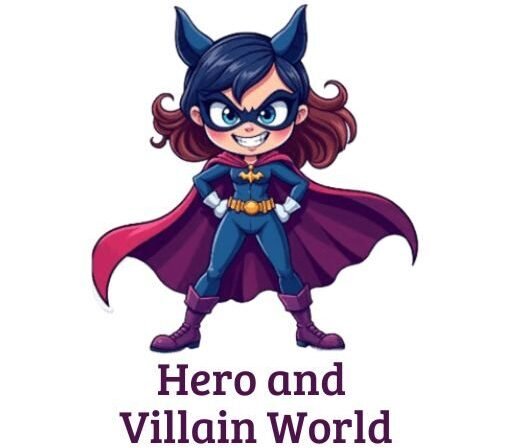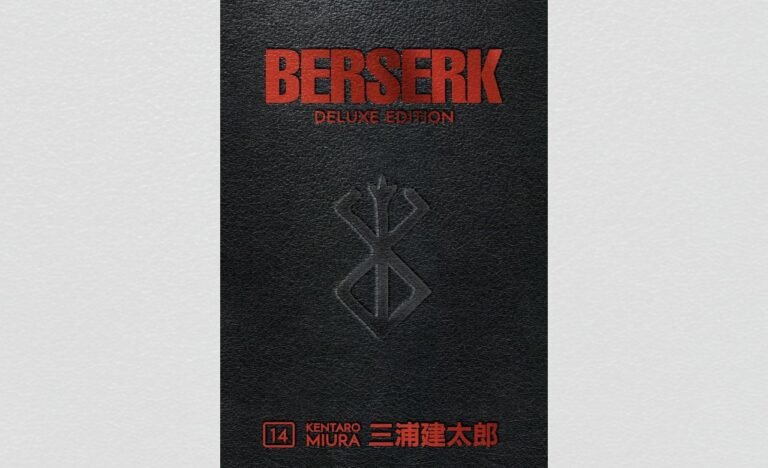Discover Sandman: Origins, Powers, and Impact
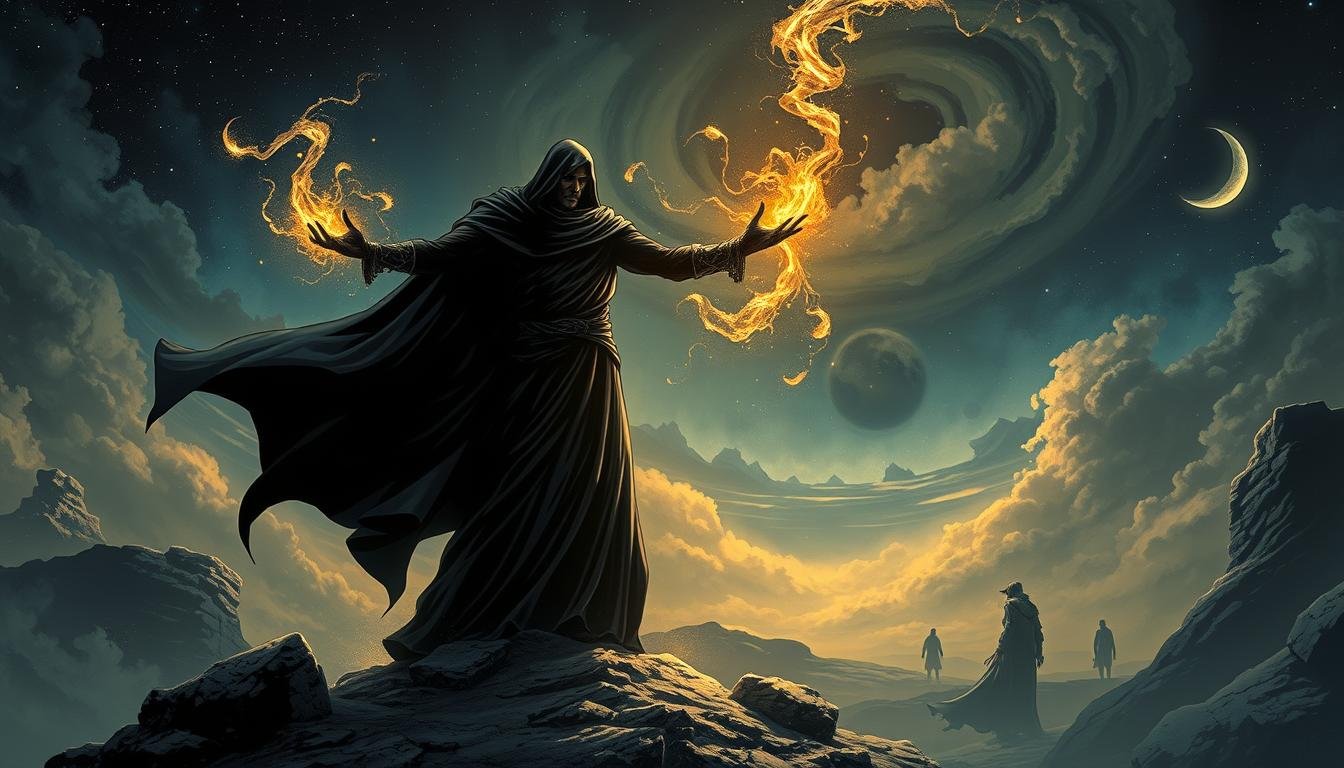
Have you ever wondered what it would be like to step into the realm of dreams? The Sandman, a cultural phenomenon spanning comics, TV, and audio dramas, invites you to explore a world where imagination reigns supreme.
Created by Neil Gaiman and published by DC Comics, this dark fantasy masterpiece has captivated audiences for decades.
In 2022, Netflix brought this iconic story to life with Tom Sturridge’s acclaimed portrayal of Morpheus, the Lord of Dreams.
The series delves into his quest to reclaim his realm, blending themes of power, reality, and storytelling. Whether you’re a longtime fan or new to the mythos, The Sandman offers a journey like no other.
Join us as we explore the origins, powers, and multiverse impact of this legendary character. From the 75-issue comic series to its modern adaptations, Hero and Villain World is your guide to the rich lore of The Sandman.
Introduction: The Legend of Sandman
Discover a groundbreaking tale that redefined the comic book landscape forever. The Sandman, a flagship title of Vertigo Comics, has sold over 15 million copies globally and won an impressive 26 Eisner Awards. Its unique blend of mythology and horror captivated readers, making it a cultural phenomenon.
The story begins with Morpheus, the Lord of Dreams, escaping a 106-year captivity. His absence caused a “sleepy sickness” epidemic, disrupting the balance of the Dreaming.
This event sets the stage for a narrative that spans historical periods and realms, showcasing a vast and interconnected universe.
One of the standout characters is Lucifer Morningstar, portrayed by Gwendoline Christie in the Netflix series.
Her chilling performance adds depth to the complex relationship between dreams and nightmares. The series’ unique structure, blending various artistic styles and storytelling techniques, further solidifies its place in pop culture.
As part of the Endless, Morpheus represents the eternal forces that shape existence. This mythological approach sets The Sandman apart from traditional comic book narratives. For a deeper dive into this legendary series, check out this introduction to The Sandman.
Who Is Sandman? The Lord of Dreams
What if your dreams were ruled by an eternal being? Meet Morpheus, the anthropomorphic personification of dreams. As one of the Endless, he holds immense power over the realm of the Dreaming. This mystical domain connects all living beings through their dreams and nightmares.

Morpheus, also known as Dream, is part of a family of cosmic entities. The Endless include Death, Desire, Despair, Delirium, Destiny, and Destruction. Each represents a fundamental aspect of existence, with Dream’s role being central to the balance of reality.
Morpheus and the Endless
Dream’s family is as fascinating as it is complex. Death, his older sister, is a compassionate guide to the afterlife. Desire, a sibling rival, embodies longing and ambition. Mason Alexander Park’s gender-fluid portrayal of Desire in the Netflix series adds a modern twist to this timeless character.
The Dreaming realm is Morpheus’s domain, a place where dreams and nightmares take shape. It’s a reflection of the waking world, yet it’s also a world of its own. This connection ensures that every living being is tied to the Dreaming, whether they realize it or not.
Dream’s Role in the Universe
Dream’s cosmic role is to maintain the balance of the Dreaming. His actions influence both the dream world and reality. Without him, chaos would reign, and the line between dreams and waking life would blur.
In the comic series finale, Daniel Hall becomes the new incarnation of Dream. This transition marks a significant shift in the story, highlighting the cyclical nature of the Endless. Morpheus’s journey is a testament to the enduring power of dreams and their impact on the universe.
From the award-winning writer of American Gods and Coraline, The Sandman is one of the most popular and critically acclaimed graphic novels of all time. Neil Gaiman’s award-winning masterpiece set the standard for mature, lyrical fantasy in the modern comics era.
The Creator Behind the Myth: Neil Gaiman
Behind every great myth is a visionary creator. For The Sandman, that creator is Neil Gaiman. Starting as a rejected screenwriter, Gaiman rose to become one of the most celebrated authors in modern storytelling.
His work on DC Comics’ The Sandman redefined the comic book genre, blending mythology, horror, and fantasy into a masterpiece.
From 1989 to 1996, Gaiman wrote all 75 issues of The Sandman, a series that became a flagship title for Vertigo.
Collaborating with artist Dave McKean, he crafted iconic cover art that became synonymous with the series. McKean’s surreal and haunting visuals perfectly complemented Gaiman’s intricate storytelling.
Adapting The Sandman for the screen was no easy feat. It took 30 years of development hell, from early attempts in 1991 to the 2022 Netflix series.
Gaiman, alongside Allan Heinberg, ensured the adaptation stayed true to the source material. As an executive producer, he played a pivotal role in bringing Morpheus’s world to life.
Gaiman’s influence extends beyond The Sandman. Spin-offs like Death: The High Cost of Living and the Lucifer TV series have further expanded the universe. His ability to weave complex narratives with emotional depth continues to inspire creators and fans alike.
The Origin Story of Sandman
Step into the shadows of 1916, where a failed ritual changed the course of dreams forever. In the world of DC Comics, this event marked the beginning of an epic tale. Roderick Burgess, an ambitious occultist, sought to capture Death but instead ensnared the Lord of Dreams. This mistake set off a chain of events that would reshape the Dreaming.
First Appearance in DC Comics
Morpheus first appeared in DC Comics’ The Sandman #1 in January 1989. The story revealed his capture by Burgess during a 1916 occult ritual.
Burgess’s failure to summon Death led to Dream’s imprisonment, which lasted for 70 years. This period weakened the Dreaming, causing chaos in both the dream and waking worlds.
From Captivity to Rebuilding the Dreaming
Charles Dance’s portrayal of Roderick Burgess in the Netflix series brought the character to life. His cold, calculating demeanor perfectly captured Burgess’s obsession with power.
Meanwhile, Boyd Holbrook’s Corinthian, an escaped nightmare, became a formidable antagonist. The Corinthian’s actions further destabilized the Dreaming, forcing Morpheus to act.
Upon his escape, Dream embarked on a quest to reclaim his tools of power: the helm, the ruby, and the pouch of sand.
Each item played a crucial role in restoring balance to the Dreaming. This journey not only showcased Dream’s resilience but also highlighted the intricate connections between dreams and reality.
| Item | Significance |
|---|---|
| Helm | Symbol of Dream’s authority and power. |
| Ruby | Contains a portion of Dream’s essence and abilities. |
| Pouch of Sand | Used to manipulate dreams and enter the Dreaming. |
This origin story is a testament to the enduring legacy of DC Comics’ storytelling. It’s a tale of loss, redemption, and the timeless power of dreams.
Sandman’s Powers and Weaknesses
What makes Morpheus, the Lord of Dreams, a force to be reckoned with? His abilities are as vast as the Dreaming itself, but even he has vulnerabilities. Let’s explore the strengths and weaknesses that define this iconic character.
Reality Manipulation and Dream Control
Morpheus holds immense power over the Dreaming, the realm where dreams and nightmares take shape.
He can enter and control dreams, crafting scenarios that range from pleasant to terrifying. This ability allows him to influence both the dream world and reality, blurring the lines between the two.
His powers extend beyond dreams. Morpheus can manipulate reality itself, inspiring creativity or instilling fear. This makes him a formidable figure, but his abilities are tied to the stability of the Dreaming. If the realm weakens, so does he.
The Helm, Ruby, and Pouch of Sand
Morpheus wields three iconic tools that amplify his powers. The Helm, forged from the bones of a deceased god, serves as a symbol of his authority and a powerful weapon in battle. The Ruby contains a portion of his essence, allowing him to warp reality and make dreams tangible.
The Pouch of Sand is perhaps his most versatile tool. It lets him induce sleep, control dreams, and enter the Dreaming at will. Together, these items make Morpheus nearly omnipotent within his realm.
Vulnerabilities and Limitations
Despite his immense power, Morpheus has weaknesses. His abilities are dependent on human belief and mythology. If people stop dreaming or lose faith in the concept of dreams, his power diminishes.
Additionally, his emotional vulnerabilities, particularly regarding love, are often exploited by his siblings, Desire and Despair.
One of his most significant limitations is his inability to harm his family or take mortal lives without cause. This moral constraint shapes many of his decisions.
Furthermore, his duel with Lucifer Morningstar in episode 4 of the Netflix series highlights the risks he faces when confronting powerful foes.
| Tool | Function |
|---|---|
| Helm | Symbol of authority and battle weapon. |
| Ruby | Amplifies reality-warping abilities. |
| Pouch of Sand | Induces sleep and controls dreams. |
Morpheus’s powers and weaknesses make him a complex and compelling character. His reliance on the Dreaming and his emotional vulnerabilities add depth to his story, ensuring his place as one of the most iconic figures in modern mythology.
Key Allies and Foes
What if the balance of dreams depended on a unique group of allies and enemies? In the realm of the Dreaming, these characters play pivotal roles in shaping both dreams and reality. From loyal allies to formidable foes, each one adds depth to the story of the Lord of Dreams.
Death, Lucienne, and Matthew the Raven
Among the most beloved allies is Death, voiced by Kirby Baptiste-Howell. Unlike the traditional grim reaper, Death is compassionate and approachable. She guides souls with kindness, making her a fan favorite. Her bond with the Lord of Dreams adds emotional weight to their interactions.
Another key ally is Lucienne, portrayed by Vivienne Acheampong. As the loyal librarian of the Dreaming, she ensures the realm’s knowledge is preserved. Her wisdom and dedication make her an indispensable part of the story.
Then there’s Matthew the Raven, voiced by Patton Oswalt. Once a human, Matthew was reincarnated as a raven to serve the Lord of Dreams. His witty humor and loyalty provide both comic relief and heartfelt moments.
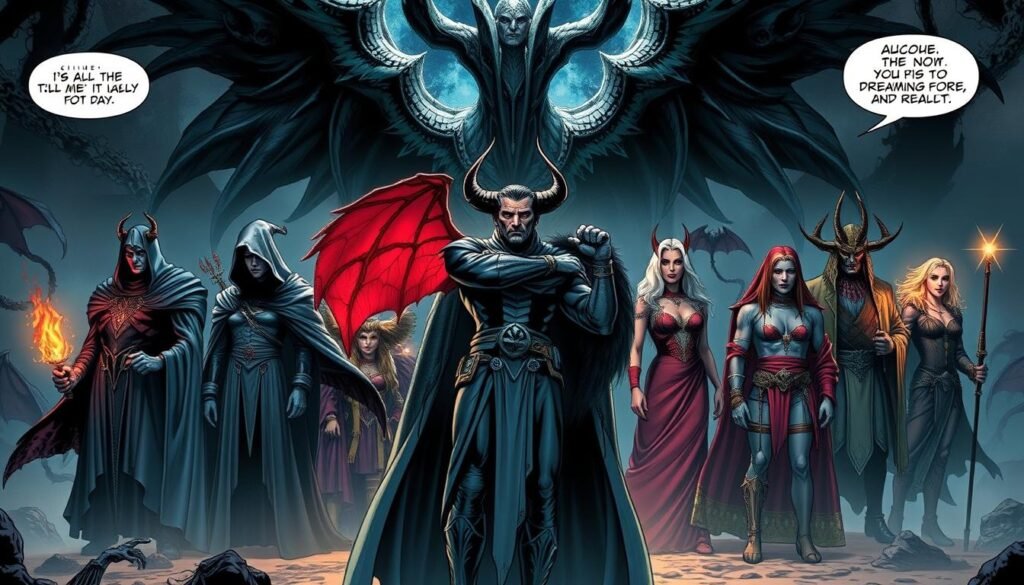
The Corinthian and Lucifer Morningstar
On the darker side, The Corinthian stands out as a nightmare incarnate. With his signature “teeth eyes,” he inspires a cult of serial killers in the waking world. His desire to escape the Dreaming makes him a dangerous foe.
Another formidable rival is Lucifer Morningstar. As one of the most powerful beings in the universe, Lucifer’s complex relationship with the Lord of Dreams adds intrigue. Their rivalry spans comics and TV, showcasing a battle of wits and power.
- Death: A compassionate guide to the afterlife.
- Lucienne: The loyal librarian of the Dreaming.
- Matthew the Raven: A witty and loyal companion.
- The Corinthian: A nightmare who inspires fear.
- Lucifer Morningstar: A powerful and cunning rival.
Sandman’s Evolution Across Media
From the pages of graphic novels to the screens of Netflix, The Sandman has evolved into a multimedia phenomenon. Its journey across different formats has brought its dreamlike world to life, captivating audiences in new and exciting ways.
The Netflix Series: Cast and Adaptation
Tom Sturridge’s portrayal of Morpheus in the Netflix series has been widely praised. His brooding presence perfectly captures the essence of the Lord of Dreams, staying true to the character’s iconic visuals from the comics.
Jenna Coleman’s dual role as Johanna Constantine and Lady Constantine adds depth to the narrative, showcasing her versatility as an actress.
The series has received critical acclaim, with a 97% Rotten Tomatoes score for Season 1. Its faithful adaptation of Neil Gaiman’s original work, combined with stunning visuals, has made it a standout hit.
Fans are eagerly anticipating Season 2, which will explore the “Season of Mists” storyline, delving into the complexities of hell and redemption.
Audible Dramas and Graphic Novels
The Audible dramas have brought a new dimension to The Sandman’s storytelling. Featuring a full-cast production, James McAvoy’s portrayal of Morpheus stands out, alongside Michael Sheen’s compelling performance.
These audio adaptations allow fans to immerse themselves in the Dreaming like never before.
The original graphic novels remain a cornerstone of The Sandman’s legacy. Their intricate artwork and storytelling continue to inspire new generations of readers. Together, these adaptations highlight the timeless appeal of Morpheus and his realm.
Unforgettable Story Arcs
Ever wondered how dreams shape reality? The Sandman’s story arcs are masterpieces of storytelling, blending mythology, horror, and fantasy. From the conflict over hell’s gates to the emotional journeys of its characters, these arcs leave a lasting impact.
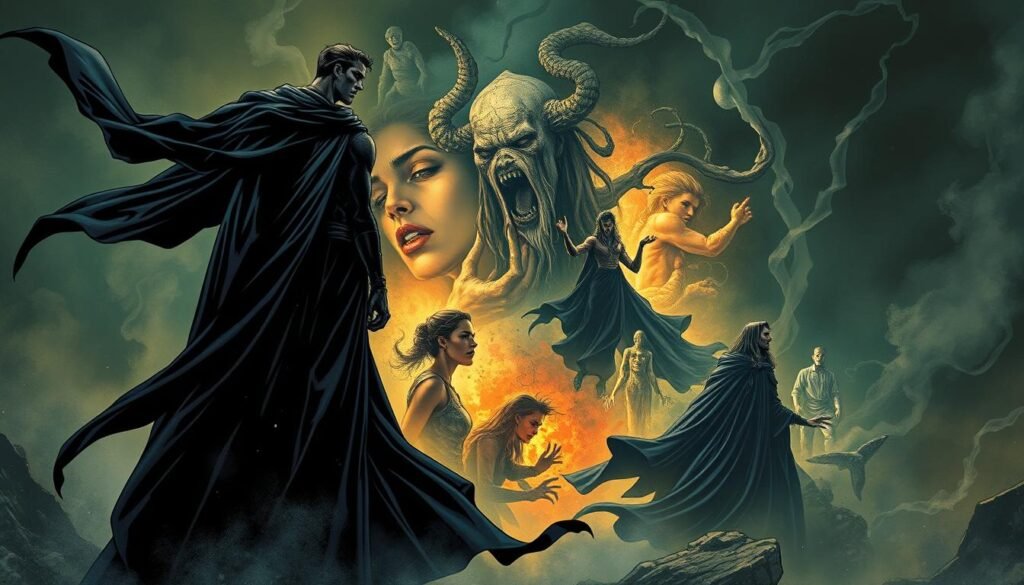
Season of Mists and The Kindly Ones
In “Season of Mists,” the Lord of Dreams faces a moral dilemma. Lucifer Morningstar abandons hell, leaving its gates open. This sparks a conflict among the Endless and other cosmic beings over who will control it. The arc explores themes of power, redemption, and responsibility.
“The Kindly Ones” delves into the Greek Furies and their connection to Lyta Hall. Her quest for vengeance against the Lord of Dreams brings chaos to the Dreaming. This arc is a culmination of emotional stakes, blending tragedy and resolution.
The Doll’s House and Brief Lives
“The Doll’s House” introduces Rose Walker, a Vortex who threatens the stability of the Dreaming. Her journey uncovers hidden truths about her family and the realm of dreams. This arc is a mix of mystery and adventure, with unforgettable characters.
In “Brief Lives,” the Lord of Dreams embarks on a road trip with his sister Delirium. Their quest to find their missing brother, Destruction, is both humorous and poignant. This arc highlights the complexities of the Endless and their relationships.
| Story Arc | Key Themes |
|---|---|
| Season of Mists | Power, redemption, cosmic conflict |
| The Kindly Ones | Vengeance, tragedy, resolution |
| The Doll’s House | Mystery, family, the Vortex |
| Brief Lives | Humor, loss, the Endless |
Neil Gaiman’s cameo as the “Dream of Cats” narrator adds a whimsical touch to these arcs. Each story is a testament to the enduring power of dreams and their impact on reality.
One of the most popular and critically acclaimed graphic novels of all time, Neil Gaiman’s award-winning masterpiece The Sandman, is finally being collected for the first time in deluxe hardcover format. Illustrated by an exemplary selection of the medium’s most gifted artists, the series is a rich blend of modern and ancient mythology in which contemporary fiction, historical drama, and legend are seamlessly interwoven.
Cultural Impact and Legacy
What if a single series could bridge the gap between comics and literature? The Sandman did just that, becoming a cultural phenomenon that redefined the boundaries of storytelling.
Published under the Vertigo imprint, it was the first graphic novel to appear on The New York Times Bestseller List, proving its universal appeal.
Academics have embraced the series, with courses analyzing its themes of identity, mortality, and the nature of reality.
Norman Mailer once called it a “comic for intellectuals,” highlighting its depth and literary merit. This recognition has cemented its place as a work of art, not just entertainment.
The series has also been celebrated for its LGBTQ+ representation. Characters like Desire and the “Dead Boy Detectives” have resonated with audiences for their inclusivity and progressive themes. These portrayals have made The Sandman a trailblazer in modern storytelling.
In 2019, the Sandman Universe imprint was launched, continuing the legacy of Neil Gaiman’s work. This expansion ensures that the world of the Dreaming remains alive, inspiring new generations of creators and fans.
The series has received numerous accolades, including multiple Eisner Awards, a World Fantasy Award, and a Hugo Award. These honors underscore its critical acclaim and lasting impact on literature and culture.
Whether through its original graphic novels or its modern adaptations, The Sandman remains a timeless masterpiece.
Why Sandman Still Resonates Today
Why does a story about dreams continue to captivate audiences decades later? The Sandman, created by Neil Gaiman, remains a cultural touchstone because it explores universal themes of change and responsibility.
These ideas are timeless, making the story relevant to every generation.
One of the most compelling aspects is Morpheus’s journey. As the Lord of Dreams, he struggles with isolation and leadership.
These challenges mirror modern issues, such as the difficulties of governance and personal growth. His story reminds us that even powerful beings face human-like struggles.
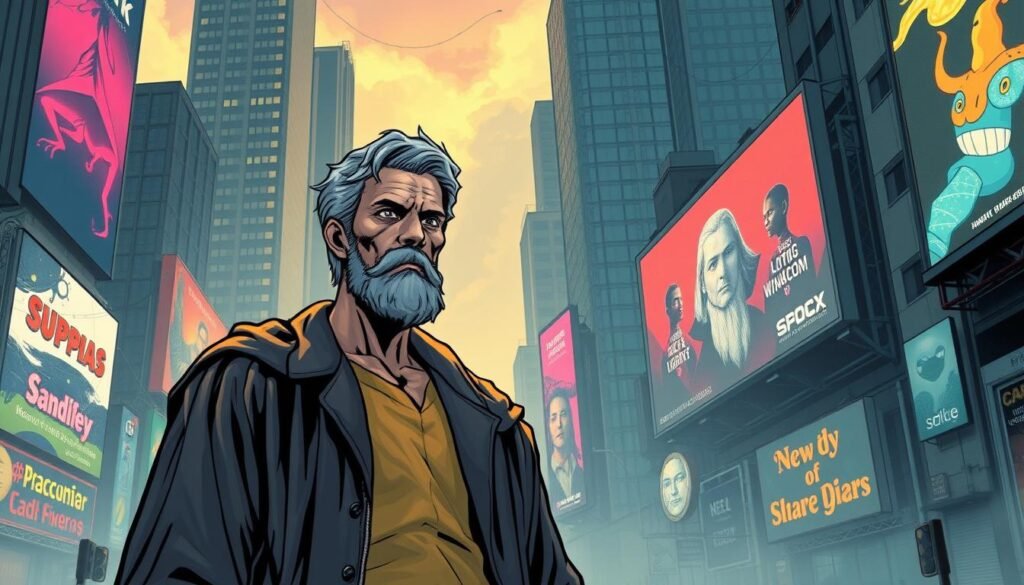
The Netflix adaptation has further cemented the story’s relevance. With 127 million hours viewed in its first three weeks, it’s clear that audiences are drawn to its themes.
The show’s diverse casting, like Death’s race-swap and Desire’s fluidity, reflects modern values of inclusivity and representation.
Another reason for its enduring appeal is the “sleepy sickness” storyline. This plot, where a pandemic disrupts the world, resonates deeply in a post-COVID era. It highlights how stories can reflect real-world anxieties while offering hope and redemption.
Looking ahead, the upcoming Dead Boy Detectives spin-off promises to expand this rich universe. This new chapter will explore fresh narratives while staying true to the original’s spirit. It’s a testament to the lasting impact of Neil Gaiman’s creation.
| Element | Why It Resonates |
|---|---|
| Universal Themes | Change, responsibility, and redemption. |
| Modern Parallels | Isolation, leadership, and governance. |
| Diverse Casting | Inclusivity and representation. |
| Pandemic Resonance | Reflects real-world anxieties. |
| Future Spin-offs | Expands the universe with new stories. |
If you’re interested in how comics influence modern storytelling, check out this article on the impact of. It’s a fascinating look at how stories like The Sandman shape our culture.
Explore More at Hero and Villain World
Ready to dive deeper into the world of comics and beyond? Hero and Villain World is your ultimate destination for exploring the rich lore of DC Comics and beyond. Whether you’re a longtime fan or new to the universe, we’ve got something for everyone.
Discover in-depth character bios that reveal hidden origins and traits. From Morpheus to Wesley Dodds, our guides cover every corner of the comic book world.
Dive into exclusive interviews, like our upcoming chat with Neil Gaiman, where he shares insights into his creative process and the impact of his work.
Stay tuned for our upcoming Sandman timeline infographic. This visual guide will highlight the series’ structure, showing how each issue connects to form a cohesive narrative. It’s a must-see for fans who want to understand the bigger picture.
Want a taste of the original series? Download a free excerpt of Issue #1 and experience the story that started it all. It’s the perfect way to introduce new readers to the world of DC Comics.
Join our community discussion forums and connect with fellow fans. Share theories, discuss your favorite arcs, and stay updated on the latest news. Hero and Villain World is more than a site—it’s a hub for comic book enthusiasts.
| Upcoming Content | What to Expect |
|---|---|
| Neil Gaiman Interview | Exclusive insights into the creative process. |
| Sandman Timeline Infographic | A visual guide to the series’ structure. |
| Free Issue #1 Excerpt | Experience the story that started it all. |
Ready to explore? Visit Hero and Villain World today and unlock the secrets of your favorite characters and stories.
Conclusion: The Eternal Dream King
In the realm of dreams, stories never truly end—they evolve. Morpheus, the Lord of Dreams, stands as a testament to this truth.
His journey from captivity to reclaiming the Dreaming is a tale of resilience, loss, and redemption. As one of the Endless, he embodies the timeless forces that shape existence, reminding us that dreams are more than fleeting thoughts—they are the essence of life itself.
The Endless are more than characters; they are storytelling devices that explore the human condition. From Death’s compassion to Desire’s ambition, each sibling represents a fundamental aspect of existence.
Their interactions and conflicts mirror our own struggles, making their stories universally relatable. Neil Gaiman’s worldbuilding is a masterclass in blending mythology, horror, and fantasy, creating a universe that feels both ancient and fresh.
For new fans, the journey begins with Preludes & Nocturnes. This arc introduces Morpheus and the Dreaming, setting the stage for the epic saga that follows.
It’s the perfect entry point, offering a glimpse into the intricate world Gaiman has crafted. Whether you’re a longtime reader or a newcomer, the story of the Endless will leave a lasting impression.
As the final comic issue shows, even Shakespeare’s *The Tempest* is woven into the fabric of the Dreaming. This connection to classic literature underscores the series’ depth and its ability to transcend genres. It’s a reminder that stories, like dreams, are eternal.
| Key Takeaways | Why It Matters |
|---|---|
| Morpheus’ Journey | A tale of resilience and redemption. |
| The Endless | Timeless storytelling devices. |
| Gaiman’s Worldbuilding | A rich, immersive universe. |
| Starting Point | Preludes & Nocturnes for new fans. |
| Cultural Impact | Connects dreams to classic literature. |
At Hero and Villain World, we celebrate the legacy of the Dreaming and its impact on pop culture. Join us as we explore the stories that shape our world, one dream at a time.
FAQ
Q: Who created Sandman?
A: Neil Gaiman, the acclaimed British author, created Sandman for DC Comics. His unique storytelling brought the character to life.
Q: What are Sandman’s powers?
A: Sandman, also known as Morpheus, wields reality manipulation, dream control, and uses iconic tools like the Helm, Ruby, and Pouch of Sand.
Q: When did Sandman first appear in comics?
A: Sandman made his debut in DC Comics in 1989, quickly becoming a fan favorite for his depth and complexity.
Q: Who are Sandman’s key allies?
A: Sandman’s allies include his sister Death, the loyal librarian Lucienne, and Matthew the Raven, who assists him in the Dreaming.
Q: What are some of Sandman’s most famous story arcs?
A: Iconic arcs like “Season of Mists,” “The Kindly Ones,” “The Doll’s House,” and “Brief Lives” are celebrated for their rich narratives.
Q: Is Sandman part of the DC Universe?
A: Yes, Sandman exists within the DC Universe but often operates in his own realm, the Dreaming, separate from traditional superhero stories.
Q: What is the Dreaming in Sandman?
A: The Dreaming is the realm Sandman governs, a place where dreams and stories come to life, reflecting the subconscious of all beings.
Q: Who are Sandman’s main enemies?
A: Sandman faces formidable foes like the Corinthian, a nightmare incarnate, and Lucifer Morningstar, the ruler of Hell.
Q: Has Sandman been adapted into other media?
A: Yes, Sandman has been adapted into a Netflix series, Audible dramas, and remains a cornerstone of graphic novels.
Q: Why is Sandman still popular today?
A: Sandman’s timeless themes, complex characters, and Neil Gaiman’s masterful writing continue to captivate audiences across generations.
